The Best Mattresses of 2020 I personally slept a minimum of seven days on more than 30 mattresses. Here were my favorites.
By John Rampton
Opinions expressed by Entrepreneur contributors are their own.

A common misconception among entrepreneurs is that regularly burning the midnight oil earns you a badge of honor. However, bad sleep (and lack of it) is bad for you. A survey of CEOs found that half slept fewer than six hours a night, while various health organizations recommend getting seven to nine hours of sleep every evening.
Between a dip in performance, higher risk of crippling health issues, increased anxiety and even obesity, there are a number of alarming reasons why sleep deprivation is terrible for entrepreneurs.
Some extended hours are inevitable for business owners. An overseas video conference might leave you operating late into the evening, or an urgent task might need to be addressed before the next day's product launch. Since it's wishful thinking to suggest every entrepreneur can find a way to always budget for a full night of sleep, one solution that can easily deliver a high return on investment is a better mattress.
I've done the due diligence to find the best mattresses available to help you sleep smarter and wake up more refreshed. I personally slept a minimum of seven days on more than 30 mattresses. Yes, this post took me a while to write. This has also helped in my 5 a.m. rising time and in adjusting my sleep for optimal business performance. Shopping for a mattress in the digital era has gotten a lot more interesting and potentially confusing, as it requires choosing from materials designed for greater pressure relief and support to cooling features and temperature controls that prevent overheating, as well as sensors to track your sleep and give you feedback on how to improve.
To help you distill between the 178 competing brands (with multiples more mattress models available), I've listed my top mattress recommendations so you can upgrade to a bed that'll deliver a restful night's sleep.
Best Mattress of 2020 Overview
- Amerisleep AS3 ($1,199 for a queen size) — Contains HIVE® technology to offer dynamic full-body support and relieve back pains
- ReST® Bed ($4,999) — Medical-grade air chambers let you personalize the bed's feel
- NordicTrack Sleep ($3,499) — Sleep Coach Sensor tracks your sleep patterns and syncs with the iFit app each morning
- Zoma Mattress ($750) — Features cooling gels and Triangulex™ technology to prevent sleep disturbances
- Purple Hybrid Premier ($2,199) — "No-Pressure" Purple Grid™ provides support and pressure relief
- Vaya Mattress ($595) — Contains contouring yet responsive foams to accommodate all sleep needs
- Kingsdown Sleep Smart® Air (N/A) — Contains IntelliMax™ technology for customized head, back, and foot support
- Bear Pro ($1,090) — Features a Celliant® cover to regulate your temperature and promote sound sleep
- Zinus Cooling Green Tea, 12 inches ($312) — Charcoal particles and green tea extract keep the bed feeling fresh
- Eight Sleep Pod ($2,495) — Water-powered thermal technology for customized temperature

1. Amerisleep AS3 ($1,199)
Amerisleep's most popular mattress is the AS3, with over 6,400 reviews and an average rating of 4.7 out of 5 stars. Its medium feel is perfect for combination sleepers and side sleepers. Given its wide appeal, the AS3 is the best overall mattress of 2020.
The AS3 comes in two forms: as a memory foam mattress and a hybrid mattress, featuring pocketed coils that add some bounce to the bed and keep you lifted. The mattress is wrapped in a soft, breathable cover to keep you cool at night. It has a three-inch comfort layer of pressure-relieving Bio-Pur® foam. Bio-Pur® is more breathable and responsive than traditional memory foam, preventing overheating and adapting within seconds to your movements. The next layer contains two inches of HIVE® technology, which compresses around the shoulders and hips for pressure point relief while providing firm support for the head, torso and feet. The base of the AS3 mattress is seven inches of Bio-Core® foam.
The company offers five mattress models to support all types of sleepers. The AS1 and AS2, which are firmer, are ideal for stomach sleepers and back sleepers. The AS4 and AS5 offer plush, thick comfort layers for side sleepers and heavy sleepers who like their mattresses luxuriously soft. Like the AS3, the AS2 and AS5 are available as memory foam mattresses and hybrids.
Amerisleep also offers an adjustable bed base with a number of special features. You can elevate your head and feet with a wireless remote to get into the perfect sleeping position. Presets make it even easier to get comfortable — the "snore" preset, for example, raises your upper body to open your airways and prevent snoring.
Tech-savvy entrepreneurs will enjoy the available iOS and Android mobile apps, which let you set a gentle-wake alarm or start a massage. The bed's full-body massage has three intensity levels at low, medium and high. Even better, you can charge your electronic devices with one of the eight USB ports.
You can bundle an Amerisleep adjustable bed with your choice of mattress for further savings. The base works with both Amerisleep's memory foam and hybrid mattresses.

2. ReST® Bed ($4,999)
The ReST® Bed is an airbed with medical-grade air chambers, four inches of gel-infused memory foam, and a sensor to collect your sleep data. The ReST® Bed's sensor monitors the entire mattress and transmits your data to the bed's pump. You can view your collected data through the ReST® Bed app.
The ReST® Bed is the best high-end mattress of 2020, but its price tag is considerable. The bed has three layers of fabric designed to measure your body's pressure across the mattress. The two outer layers create a pressure grid that tracks your body. The inner semiconductor layer senses your movements.
Every ReST® Bed has three operation modes. In manual mode, you can change support for your head, shoulders, back, hips and legs; the settings lock until you change them again. Auto position mode uses presets for sleep positions and will adjust to each preset as you change position. Automatic mode adjusts the mattress throughout the night according to your preferences.
The ReST® Bed includes a 90-day sleep trial and a 10-year warranty. The warranty covers the cost of replacement parts and any shipping fees. ReST® will try to have replacement parts shipped within one to three days.
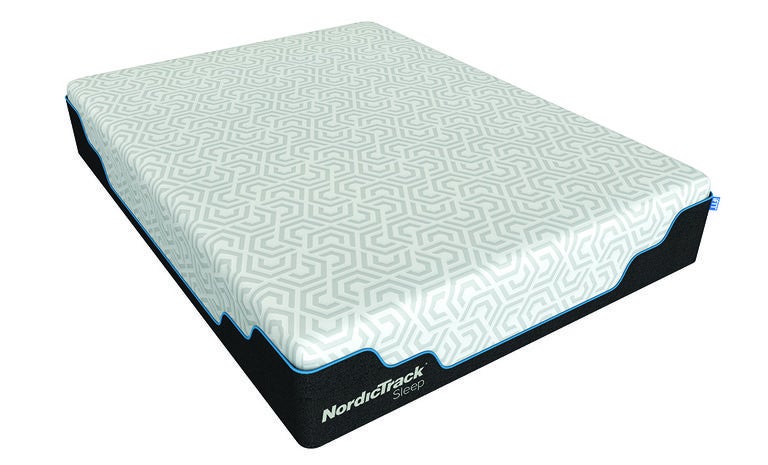
3. NordicTrack Sleep ($3,499)
NordicTrack expanded beyond exercise equipment to help customers with its smart hybrid mattress. The mattress has three layers and a sensor to collect data while you sleep.
The top layer is two different memory foams for pressure relief. There's CoolSupport™ to keep temperatures low and NovuGel™ with millions of gel beads. The knit fabric on top of the memory foam pulls moisture away from you to keep you cool and promote airflow.
The second layer is RightShape™ interlocking foam. This layer minimizes motion transfer with its CoilFlex™ technology, which has micro-coils that move left, right, up, and down.
The base layer has individually wrapped coils for adaptive support and further motion isolation. The rigid foams around the coils offer consistent edge support for easier maneuvering in and out of bed.
The mattress's Sleep Coach Sensor tracks your breathing, heart rate, and sleep patterns. This data syncs with the iFit app every morning. You can examine your data and get tips on how to sleep better. If you're having sleep problems, the app can connect you with a sleep coach to discuss your difficulties.
You can choose from a plush or firm mattress. The NordicTrack mattress includes a 100-night trial and a 10-year warranty. The sensor comes with a separate 1-year warranty.
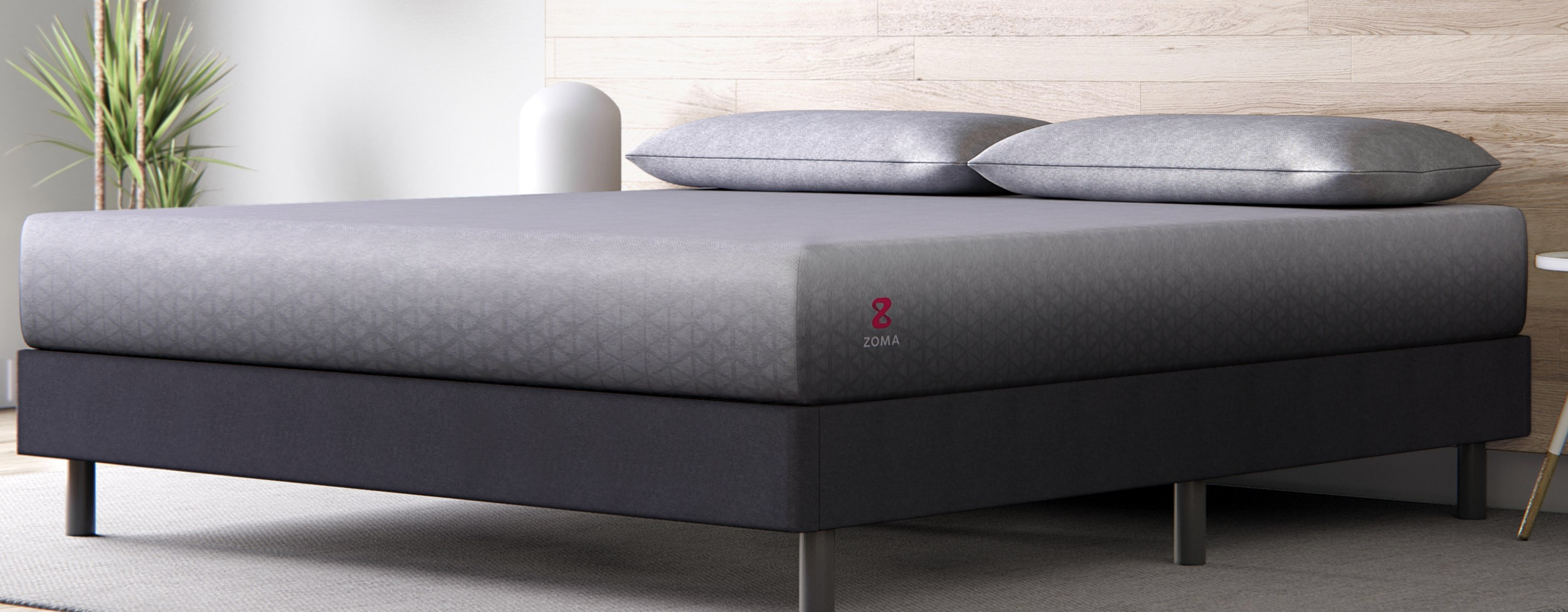
4. Zoma Mattress ($750)
Zoma strives to improve performance and recovery with its mattress, using cutting-edge sleep technology and innovative design. Interestingly enough, on Instagram, dozens of pro athletes have been spotted promoting Zoma's sleep-enhancing benefits. So, if it's fit for a linebacker, it's even better for high-performance entrepreneurs.
The thing that makes Zoma stand out as one of the best online mattresses is its specialty layers engineered to improve sleep.
The first layer features gel memory foam incorporating Triangulex™. The Triangulex™ design uses hundreds of triangular cutouts in the shoulder and leg areas, which provide better pressure relief to minimize pain and sore spots. The space between the cutouts also allows air to flow freely and wick away heat, so you can sleep cool and comfortably.
In the middle is Zoma's Reactiv™ layer. Reactiv™ has a latex-like feel that bounces back into its shape quickly. That way, it responds to your every movement as you get comfortable and shift around while you sleep. At the same time, it adds support and protects the base layer of foam.
The bottom Support+ layer is designed for long-lasting support and durability.
The Zoma mattress includes a 100-night sleep trial and a 10-year warranty that covers sagging greater than 0.75 inches.
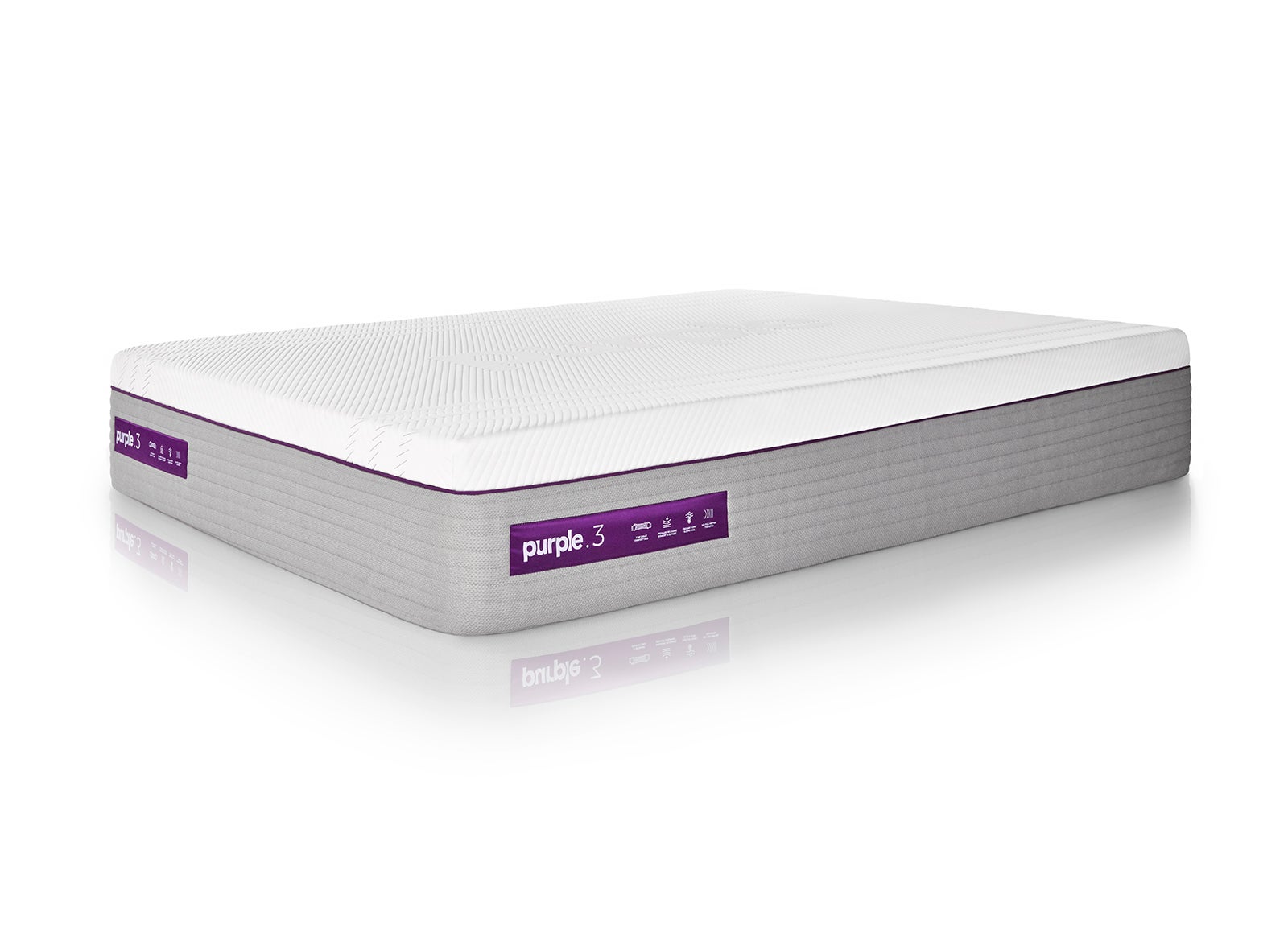
5. Purple ($2,199)
Purple sells three different mattresses. There's the original Purple foam mattress, the Purple hybrid, and the Purple hybrid premier.
Every mattress contains Purple's unique "No Pressure" Purple Grid™, which Purple designed to maintain support for your back while letting the heavier parts of your body, such as the hips and shoulders, sink in for pressure relief.
A Purple mattress has two inches of Purple Grid™, along with two more layers of CertiPUR-US® certified foam for support. The basic hybrid also has two inches of the Purple Grid™ on top of an inch of poly-foam and coils. The luxury hybrid has your choice of three or four inches of Purple Grid™.
Purple makes its grid with hyperelastic polymer, which is designed with thousands of open-air channels to minimize overheating. The hybrids have improved breathability thanks to the coils.
A Purple mattress includes a 100-night sleep trial and a warranty that covers sagging greater than an inch. Purple asks that you try the mattress for at least 21 nights before returning it.

6. Vaya ($595)
The Vaya mattress is an excellent budget mattress for people who don't want to compromise on sleep comfort and quality. It's 12 inches thick with two foam layers — three inches of Vaya Comfort Foam and nine inches of Vaya Base Foam.
The Vaya Comfort Foam contours to the body for pressure relief yet is adaptable so you can move without ever feeling stuck. Vaya Comfort Foam is less dense than memory foam and wicks away warm air for a cooler night's sleep. The Vaya Base Foam enables the mattress to resist wear and tear for a long time.
The plush comfort layer is ideal for all types of sleepers. It lets the shoulders and hips sink in while the base layer supports healthy spine alignment.
Every Vaya mattress comes with a 100-night sleep trial and a full replacement 10-year warranty.
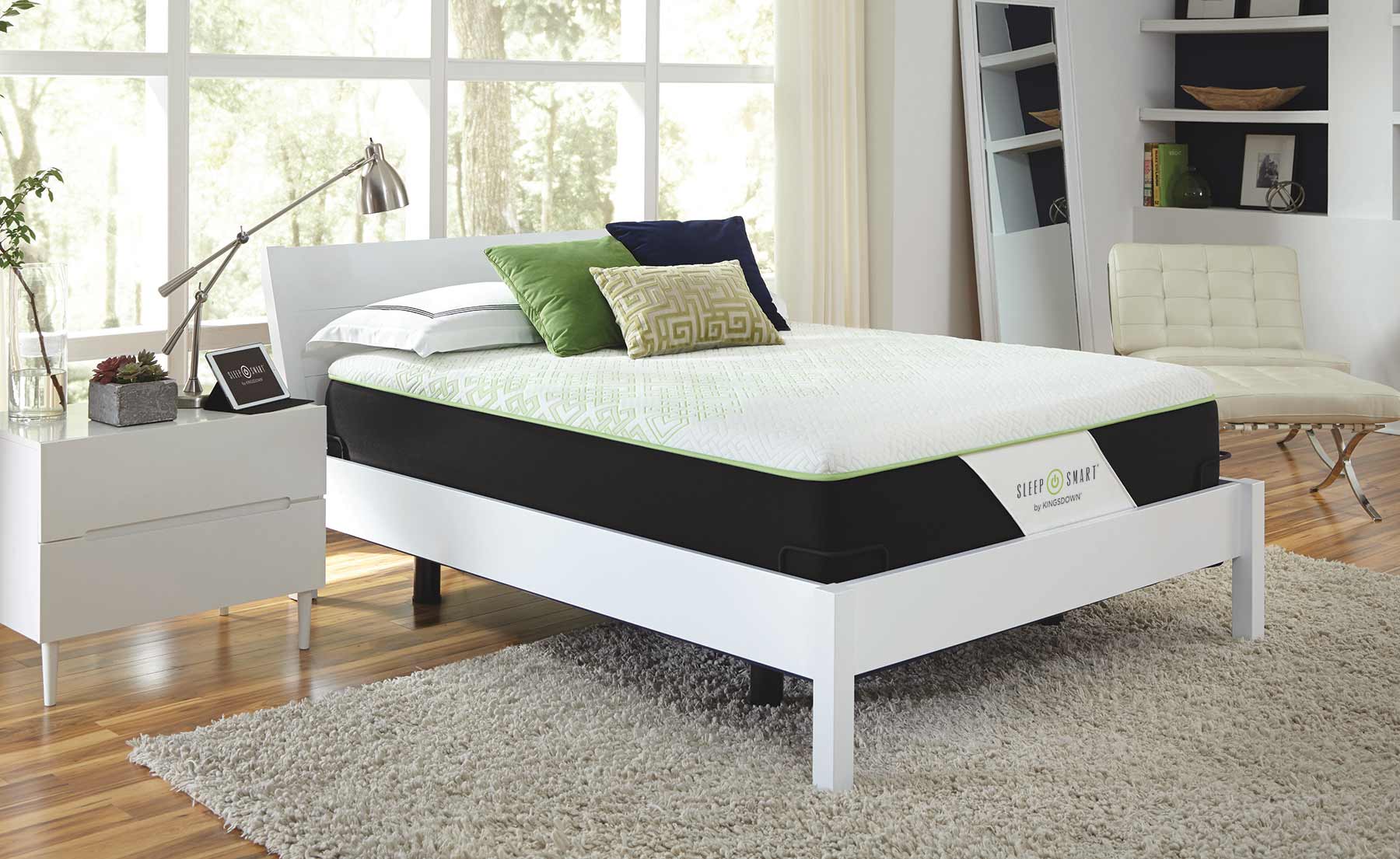
7. Kingsdown Sleep (N/A)
Kingsdown sells two smart mattresses — the upcoming BodyPerfect® mattress and the Sleep Smart® Air mattress.
The BodyPerfect® mattress makes continuous adjustments during the night for optimal alignment, support, and pressure relief. The mattress includes an Android tablet and an app that summarizes your sleep data and provides sleep tips each day. Additionally, the app lets you set up profiles for you and a partner, set alarms, and account for acute or chronic pain in your settings. Kingsdown has not released information on the mattress's material specifications.
The Sleep Smart® Air has IntelliMax™ technology for customized support for three different areas — the head and neck, the back, and the knees and feet. Each zone is controlled independently, and you can adjust it from your smartphone or smart home system.
Inside the Sleep Smart® Air is individually wrapped coils for support and motion isolation. High-density, ventilated foams surround the bed's perimeter for edge support with improved air circulation. The performance fabric on top of the mattress wicks away moisture and heat for a good night's sleep.
Kingsdown only sells its mattresses in stores, so I'm unable to provide prices. The website helps you find the nearest retailer within 10, 30, and 60 miles.
The mattresses include a 10-year warranty, while the electronics have a separate 5-year warranty. The mattress warranty covers sagging greater than an inch in a non-quilted mattress and sagging of more than 1.5 inches in a quilted mattress.
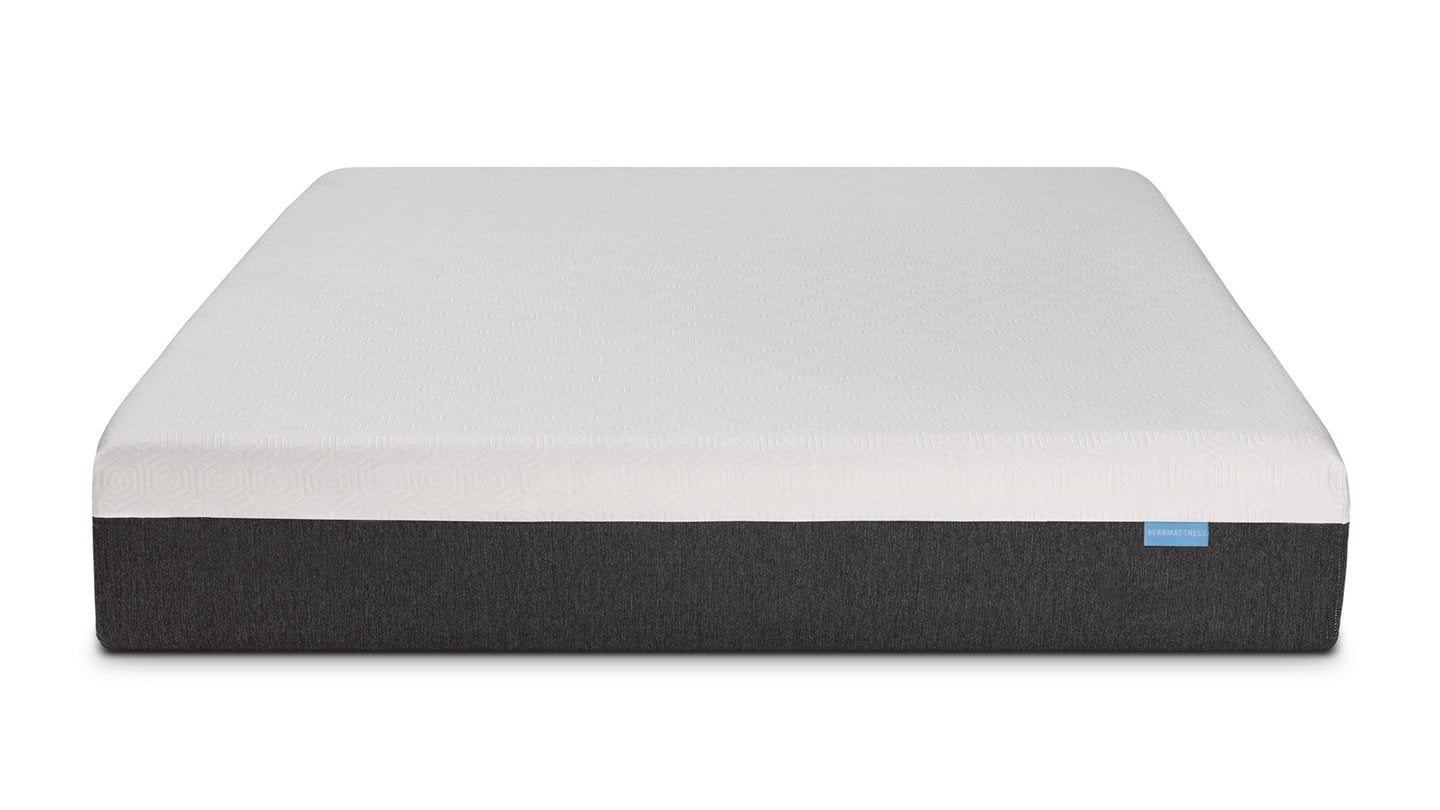
8. Bear ($1,090)
Bear features three different mattresses: the original Bear mattress, the upgraded Bear Pro and the Bear Hybrid. I recommend the Bear Pro and the Bear Hybrid.
The Bear Pro mattress is 12 inches thick with a medium feel. The top layer is copper-infused foam to keep away germs, followed by a layer of gel-infused memory foam. The third layer is responsive transition foam for support and pressure relief. The base layer is high-density support foam.
The medium-firm Bear Hybrid is 14 inches thick. The top layer of gel foam features a "cool, cloud-like feeling," according to the company website. A comfort foam underneath adapts to your body and sleep position and the responsive foam provides support and pressure relief. The bed's Quantum coil system rests atop an inch of high-density support foam.
Every Bear mattress includes a Celliant® cover, which absorbs body heat and converts it into infrared energy. The infrared energy penetrates your body for a temporary boost in local blood flow.

9. Zinus ($312)
Zinus mattresses are very affordable, with most priced at less than $500. My recommendation is the Cooling Green Tea memory foam mattress. Zinus offers other memory foam mattresses, hybrid mattresses, and a spring mattress with a quilted pillow top.
The layers of foam in a Cooling Green Tea mattress depend on your chosen thickness — the mattress is available in 6 inches, 8 inches, 10 inches, and 12 inches. The better investment among the options would be the 10-inch and 12-inch models.
The 10-inch mattress has 2 inches of gel memory foam, 2.5 inches of soft foam, and 5.5 inches of high-density foam. The 12-inch model has two inches of gel memory foam, three inches of soft foam, and seven inches of high-density foam.
The mattress contains charcoal particles and green tea extract for extra freshness.
A Zinus mattress comes with a 100-night sleep trial and a 10-year warranty. The warranty covers indentations deeper than 1.5 inches.

10. Eight Sleep
Eight Sleep offers two models of smart mattresses, its Smart Bed and the Pod. The mattresses track your sleep cycle, heart rate and breathing.
The medium Smart Bed has a smart cover with sensor technology, a layer of responsive foam for back support, transition foam to isolate movement and high-density foam to deter sagging. You can set a smart alarm to wake you during light sleep for less grogginess and adjust how warm each side of the mattress is.
The Pod mattress has five layers and uniquely includes water-powered thermal technology. Its Active Grid technology under the soft, breathable cover lets you customize the bed's temperature. The sensors that track your sleep are also in this layer.
Underneath are four layers of CertiPUR-US® certified adaptive foam. An attached hub at the base pumps water to the Active Grid to keep the bed at your preferred temperature. The Pod mattress features a thermo alarm that wakes you by changing the surface of the bed's temperature.
Eight Sleep's mattresses include a 100-night trial and a 10-year warranty. A separate warranty protects the technology layer. The Pod has a two-year warranty and the Smart Bed has a one-year warranty.
Other mattress brands to consider
Helix
Helix sells hybrid mattresses with soft, medium and firm feels. Helix also offers luxury mattresses in each feel with two extra inches of height, zoned back support for better contouring and a pillow top.
Serta
Serta has innerspring, memory foam and hybrid mattresses. Its memory foam mattresses use iComfort Memory Foam and range from plush to extra-firm.
How do I know if I need a new mattress?
One sign you need a new mattress is if you're losing sleep or waking up in pain. This can also be indicative of a sleep disorder or another health condition, so you might want to speak to your doctor.
Eyeballing your mattress and seeing how it feels should also tell you if it's due for replacement. A mattress that's sagging or developing lumps or has signs of damage such as rips, cracks or broken coils is no longer fit for sleep. You might be able to stretch out its use by rotating it or using a mattress topper, but these are only temporary solutions. Eventually, you'll need a new mattress.
As an entrepreneur, you generally have limited time available for sleep. Use it efficiently with the best mattress for your specific sleep needs. It's not worth clinging onto an older bed (consider it a "sunk cost") if it's depriving you of a quality night's sleep.
Other considerations for buying a new mattress.
When shopping for a comfortable mattress, you want to consider:
- Which firmness is right for you? Side sleepers need a softer mattress than back and stomach sleepers.
- How does the mattress keep cool? A mattress without cooling features or temperature regulation might retain too much body heat, causing you to wake early.
- How easy will it be to move the mattress? A lightweight mattress is easier to rotate (if rotating is even necessary).
- Does the mattress limit movement transfer? Motion isolation prevents couples from disturbing each other's sleep.
- Is the bed hypoallergenic? Foam layers are typically dense enough to keep out allergens. Some foams are infused with antimicrobial copper.
Optional features to look for include:
- Extra lumbar support to alleviate back pain.
- Edge support to make moving out of bed easier.
- Eco-friendly materials such as organic cotton or wool, natural latex, plant-based foams and water-based adhesives.
- Smart technology to customize your mattress and track how you sleep.
What about smart technology?
More and more mattresses are incorporating electronic gadgets to help you get a good night's sleep. Examples include:
- Sleep sensors — These track how long it took you to fall asleep, how often you woke up, the time you spent in a sleep stage or sleep position, as well as your heart rate, body temperature and breathing patterns during the night.
- Temperature control — Hot sleepers can set the mattress at a cool temperature for better sleep, while people prone to chills can raise the temperature to keep warm.
- Lighting — Sensors can turn on under-bed lighting when you get up to use the bathroom, and turn it off when you return to bed.
- Synchronization with other electronics — You can have your coffee maker start brewing when you get out of bed or set your lights to dim when you get into bed.
While the quantified self is indeed appealing to many tech entrepreneurs, you should try to avoid getting too caught up in what your sleep data tells you. Becoming a perfectionist about sleep can cause you to develop orthosomnia, a condition where people become anxious about losing sleep, ironically causing them to lose more sleep.
Be aware that sleep-tracking technology has its limits and sometimes reports inaccurate or incomplete data. You might be stressing for nothing.
What are the main mattress types?
I focused on bed-in-a-box memory foam mattresses, hybrid beds and airbeds when giving my top mattress recommendations of 2020. However, there are five main types of mattresses to consider as you shop. Here are the five main types of mattresses to help you decide which best suits your needs.
Memory foam
Memory foam responds to pressure and heat, which is why companies use it in the comfort layer for pressure relief and cooling. Stiffer foams such as poly-foam support the memory foam layer, pushing back to keep you from sinking into the mattress.
Memory foam relieves pressure as it adjusts to your body, which is a significant reason why these beds have grown so popular. Another reason is the bed-in-a-box trend, as memory foam compresses well for home delivery — uncompressed mattresses take up more space in a delivery truck and are bulkier to handle. Many couples enjoy memory foam mattresses because they minimize motion transfer, letting your spouse sleep undisturbed.
Memory foam can trap body heat because it's so dense. Cooling features such as infused gels and plant-based foams help the mattress absorb and wick away heat.
Latex
Latex foam has a similar feel to memory foam but with more elasticity, so you tend to feel more on top of a latex mattress than cradled by it. You can choose between a natural latex mattress and a synthetic latex mattress. Natural latex is a great option for anyone who wants to be eco-friendly, but natural latex mattresses can be expensive.
To create natural latex, companies harvest rubber tree sap. Manufacturers then process it into foam according to the Dunlop or Talalay method. Dunlop latex has a firmer but springy feel. Talalay latex is less dense and bouncy.
Manufacturers produce synthetic latex mattresses from petroleum-based, man-made rubber. Synthetic latex mattresses are less durable and responsive than natural latex, but they are inexpensive and provide a cool night's sleep.
Innerspring
Innerspring mattresses remain a top choice even as other mattress types grow more popular. Innersprings are inexpensive, available at many mattresses stores and familiar to most people. However, innersprings have the lowest customer satisfaction reviews. Many owners wake up in pain due to the lack of responsiveness and contouring.
Innerspring mattresses contain coils. These coils are sometimes wrapped in foam or fabric, such as cotton and wool, for better motion isolation. The bed may have a Euro or pillow top to prevent you from feeling the springs through the mattress.
Innersprings are the type of mattress most prone to sagging. As the coils age, the mattress loses support, leaving you in pain. The coils may creak, break off or poke through the mattress.
Hybrid
Hybrid mattresses combine the coil support of an innerspring with memory foam, latex or polyurethane foam. Each hybrid has two to three inches of foam on top of a coil setup.
Hybrids address some of the problems of an all-foam mattress and an innerspring. The foam comfort layer contours to a sleeper better than a spring mattress, while the inner coils let air flow through the bed.
Many hybrids also include edge support to prevent you from rolling over the side and make it easier to get out of bed.
Airbed
Do not confuse airbeds with inexpensive blow-up mattresses. These beds contain air chambers, and the more chambers, the more support the bed can offer. You can add or remove air using an electric pump for quick adjustments to the bed's feel. Airbeds may have a comfort layer of poly-foam, memory foam or latex.
Many owners find airbeds provide excellent comfort and support, thanks to customization. However, airbeds can develop leaks or issues with the pump. This leaves the owner reaching out to the company for a replacement part and sleeping on an uncomfortable mattress until it arrives.
Price is another factor to consider. The average queen size airbed costs around $2,400 — more if it incorporates smart technology. Replacement parts for the mattress can also cost hundreds of dollars.
How long does a mattress last?
The expected lifespan of your mattress depends on its materials. In general, mattresses with coils are more likely to sag, so they have a shorter lifespan.
Average expected life spans for each type of mattress are:
- Innerspring — five to six years
- Hybrid — six to seven years
- Memory foam — seven to 10 years
- Airbeds — eight or more years
- Natural latex — 12 to 20 years
What are the best sleeping positions?
The position you fall asleep in can guide you toward the right mattress. Different firmnesses and mattress types work best with each position. Here are the four sleep styles and what you should look for in a mattress.
Side sleepers
Side sleeping is the most popular sleep position and offers a variety of benefits. It reduces snoring and acid reflux, alleviates sleep apnea and helps the brain clear out waste products.
Pressure points tend to build up in the shoulders and hips of side sleepers, and if the pressure accumulates, it causes pain and restlessness. A side sleeper's mattress should have a soft to medium feel so the hips and shoulder can sink into the mattress and relieve pressure.
Foam beds and hybrids work well for side sleepers, but they should avoid innerspring mattresses. An innerspring's lack of contouring can not only cause pressure buildup but can misalign the spine if the hips and shoulders don't have room to sink.
Back sleepers
While not as popular as side sleeping, back sleeping might be the best position to maintain healthy spine alignment. Your back directly touches the mattress, and your weight is evenly distributed. However, back sleeping can cause or worsen snoring, sleep apnea and acid reflux. If these are concerns, you might want to sleep on your side or consider an adjustable base to elevate your upper body.
Back sleepers need a firm bed that can meet all their spine's curves for proper support. Look for a mattress with a medium-firm to firm feel.
Stomach sleepers
Stomach sleepers risk waking up with lower back pain or neck pain because of the strain they place on their spine. The stomach often sinks into the mattress, stretching the spine out of its curves. Stomach sleepers should consider a switch instead to side or back sleeping.
If you love stomach sleeping, look for a mattress with medium-firm to firm feel to prevent your spine from overextending. Keeping a pillow under your torso also protects against sinkage.
Combination sleepers
Also known as restless sleepers, combination sleepers shift between two or three positions. You want to look for a bed with a medium feel to let you flit between sleep positions. You should also look for a bed with excellent motion isolation and responsiveness, to minimize sleep disturbances.
Which mattress firmness is best?
There is no one best firmness for everyone. The best mattress firmness for you depends on your sleep position, body type and comfort preferences.
Sleep position affects what firmness level is right for you because it determines the distance between your spine and the bed.
Body type influences your ideal firmness because it determines how much pressure you put on the mattress. People over 230 pounds push down on a mattress more than the average person, so they should look for a firmer mattress. Conversely, people under 130 pounds place less pressure than average on a bed, so they need a softer mattress to conform to them.
Companies determine what firmness a mattress is by using the firmness scale. The scale runs from one to 10, with one being the softest and 10 the firmest.
If you're shopping for a luxury mattress, you may encounter terms such as "plush firm" or "luxury firm." Despite the presence of the word "firm," these mattresses often have more of a medium feel because the beds have extra cushioning.
Which mattress size is best?
When you're thinking of how your next mattress will fit into your life, you want to consider how it will fit into your bedroom. Perhaps you have limited space, or maybe you want to upgrade to a bigger bed. Here's a quick size chart:
- Twin — 38" by 74"
- Twin XL — 38" by 80"
- Full — 54" by 75"
- Queen — 60" by 80"
- King — 76" by 80"
- California king — 72" by 84"
- Split king — two mattresses, 38" by 80" each
Note that these are only the standard size mattresses. Odd sizes such as the Olympic queen (6 inches wider than a standard queen) or the Alaskan king (9 feet by 9 feet) do exist but are restricted to online sellers.
Single sleepers can rest comfortably on anything between a twin to a queen — or even a king-size mattress if you like the luxury of sleeping alone in a big bed. Couples, however, will feel cramped on anything smaller than a queen size mattress.
If you share a bed with a restless sleeper, or if you and your partner have different comfort preferences, a split king mattress might make sleeping easier. With a split king, you can customize your side of the bed to your liking. So instead of compromising with a medium feel mattress, couples can set up their bed with a soft and firm side.
We recommend leaving about 30 inches around each side and foot of the bed, along with any space you need for bedroom furniture.
What is a good mattress price?
Mattresses span a broad price range, from under $1,000 to more than $6,000. For a high-quality mattress, you should budget between $1,000 and $3,000. As an entrepreneur, just remember that this is an investment that'll continue to improve your quality of life, night after night.
Queen size memory foam and innerspring mattresses tend to cost under $2,000. Hybrids and latex mattresses often cost around $2,500. Smart mattresses usually cost between $3,000 to $5,000 for a queen size.
Bedding accessories have variable prices as well. Good pillows cost between $30 to $150, and queen-size adjustable foundations range from $1,800 to $4,000.
If you're looking to save, keep an eye out for online mattress brands that offer discounted bundles with an adjustable bed frame and mattress. You can find some of the best prices by buying from direct-to-consumer companies. Most online brands sell directly to the customer rather than use a third-party mattress store as a middleman.
How long should a sleep trial period last?
Many of the best mattresses are online, as are some of the best prices. A few online mattress companies have showrooms where you can try out their beds, but many do not. To reassure you that you're buying a quality mattress sight unseen, companies offer a sleep trial period to let you try out the mattress in your home. If it's uncomfortable, you can return it or exchange it for another.
Most brands offer a trial period between 90 to 120 days. Some are as short as 60 days. I strongly advise against any trial that gives you fewer than 30 days to test out a mattress.
What is a good return policy?
Every quality mattress you consider should include a return policy. Read through it before purchasing. The return policy should tell you:
- How to file a return claim
- How long you have to make a return
- The condition the mattress must be in to be eligible for a return
- If you will receive a full refund or pay a shipping fee or restocking fee
Many companies will pick up your mattress and donate it. Some will ask you to donate it and show proof before issuing a refund.
What is a good warranty?
Most quality mattresses come with a 10-year warranty, as per industry standard. If the warranty extends beyond 10 years, it's typically with prorated coverage after the initial warranty. Prorated means the owner will pay a portion of the original mattress's costs to repair or replace the mattress.
Warranties cover structural defects and not normal wear and tear. Lifetime warranties aren't the deal you might expect, as most mattresses wear out in under 10 years.
Length is not all you should consider when judging a warranty — the damage it covers matters as well. Many warranties differ by how deep a mattress must sag before the company replaces it. Some won't replace or repair mattresses with sags less than two inches deep! Most sleepers find it painful to sleep on a mattress that sags more than an inch. I'd strongly recommend warranties that cover sagging under an inch.
A smart mattress with sensor technology may have a separate warranty for the electronic components. An electronics' warranty likely covers up to five years.
Should I read mattress reviews?
It's always a good idea to check the company website for customer reviews. Take it as a warning sign if you can't find any reviews or only find highly rated reviews. It might mean the company isn't eager to consider customer feedback.
Don't just look at the company website for reviews. Check Amazon and other third-party platforms selling the mattress for feedback.
Other tips for a good night's sleep
Even the best memory foam mattress or hybrid bed won't help you sleep better if you don't practice healthy sleeping habits. To improve sleep hygiene, you must:
- Establish a set bedtime and wake time. Stick to your sleep schedule, even on the weekends. Sleeping in disrupts your internal clock.
- Keep your bedroom dark and cool. The thermostat should be set between 60 and 75 degrees.
- Limit time on your phone and computer. The blue light stops the production of melatonin, which makes you sleepy.
- Develop a bedtime routine. Spend the last hour before bed on relaxing activities. Take a warm bath, do gentle stretches, or read a chapter or two in a book.
Conclusion
Your best mattress doesn't need to have expensive smart technology. The extra features are nice to have but non-essential to a good night's sleep. Instead, a better mattress is more likely to leave you energized the next morning.
What makes a quality mattress is its durability, support, and comfort level. The different mattresses I highlight offer these three traits through varying features. And the mattresses span a wide range of prices to fit into anyone's budget.
Remember, as much as entrepreneurs invest in their company, their team and their minds, they should also invest in rest. Get one of the best mattresses of 2020 to help you elevate your sleep experience so you can wake up feeling ready to tackle all the challenges your business throws at you.
Need more help sleeping? Here are a few sleeping tips I put together, as well as sleeping tips to get to bed earlier.











